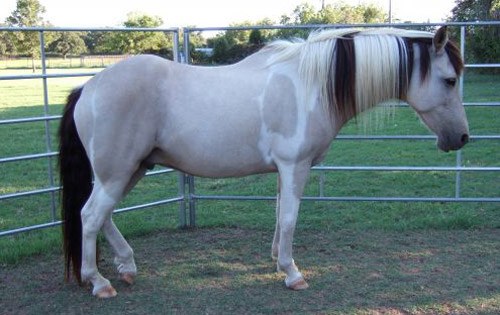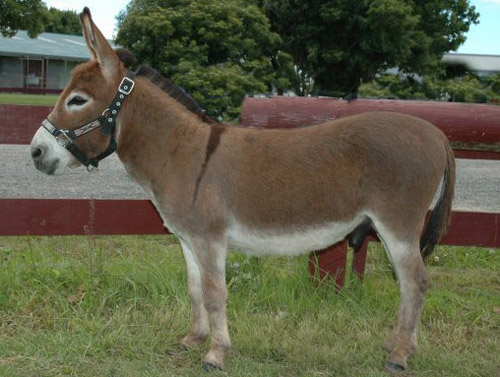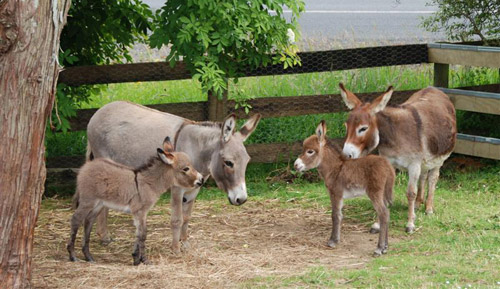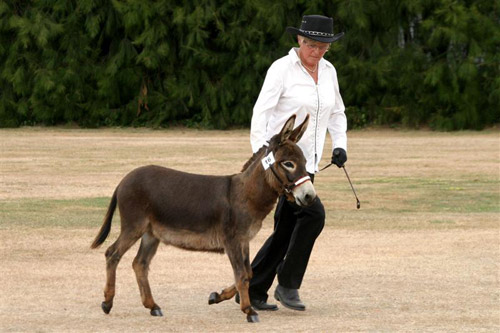Intro
The American Walking Pony is a relatively new pony breed, developed for use as a show pony in gaited show competitions. They are capable of multiple gaits, walk, pleasure walk, merry walk, trot, canter, slow gait & the rack. (more…)
The American Walking Pony is a relatively new pony breed, developed for use as a show pony in gaited show competitions. They are capable of multiple gaits, walk, pleasure walk, merry walk, trot, canter, slow gait & the rack. (more…)

The first Thoroughbred horse imported to the American colonies was Bulle Rock in 1730. From that point the colonies began a grand love affair with horse racing & its robust athletes.
(more…)

This is a breed that actually earns its name, trotters & pacers are required to meet speed requirements prior to registration with their respective breed associations. The Standardbred name comes from the qualifying standard time these animals must pass to register (a mile in under 3 minutes).
(more…)

The main objective for breeders of the American Spotted Paso horse is combining the smooth gaits of the Peruvian Paso with the colorful coat patterns of the pinto.
(more…)
Sport ponies have been enjoyed for hundreds of years in Europe & it was inevitable that their stock would gradually make its way to North America.
(more…)

This is the smallest of the donkey breeds and they are known for their incredible strength and willing attitude.

The American Miniature Mediterranean Donkeys originated in southern Europe on the small islands of Sardinia & Sicily. In the 18th century they were primarily used indoors for grinding grain and as pack animals for mountain shepherds.
The breed was introduced to the US in 1929 when the first imports were received by Robert Green on his stud farm in New Jersey.
“Miniature Donkeys possess the affectionate nature of a Newfoundland, the resignation of a cow, the durability of a mule, the courage of a tiger, and the intellectual capability only slightly inferior to man’s.” – Robert Green
Today these tiny animals are almost extinct in their native lands, luckily they have become popular pets in the states where their numbers continue to grow.
Under 36″ high
Compact & well proportioned
Grey dun w/chocolate highlights is most commonly found
black | sorrel | pinto | creme
Kind & easy going
Affectionate & intelligent

Mainly pets & show animals
*All links open in a new window
Miniature Donkey Association
National Miniature Donkey Association
Clovercrest
Carinya Park
Joy Miniature Donkeys
Best Friends Farm
Clovercrest Miniature Donkey Stud
Carinya Park Stud
Through selective imports & good breeding practices, the American Shetland pony has made a name for itself in North America as a smart, handsome, versatile pony.
(more…)

Also known as the Kentucky Saddler, this breed was developed in Kentucky as a stylish utility horse for plantation owners of the south. Their easy gait made hours in the saddle easier & their mild temperament made them easy to manage.
(more…)

The paint is a performance type color breed & are often bred exclusively for their spotted pattern. Crosses to gaited, pony or draft breeds are not recognized by the registry, only Thoroughbred or Quarter Horse bloodlines are allowed.
(more…)

Perhaps most well known for their association with Cowboys of the wild west (although the breed began on the Eastern Seaboard) the Quarter horse is a symbol of American horsemanship & the oldest North American breed.
(more…)